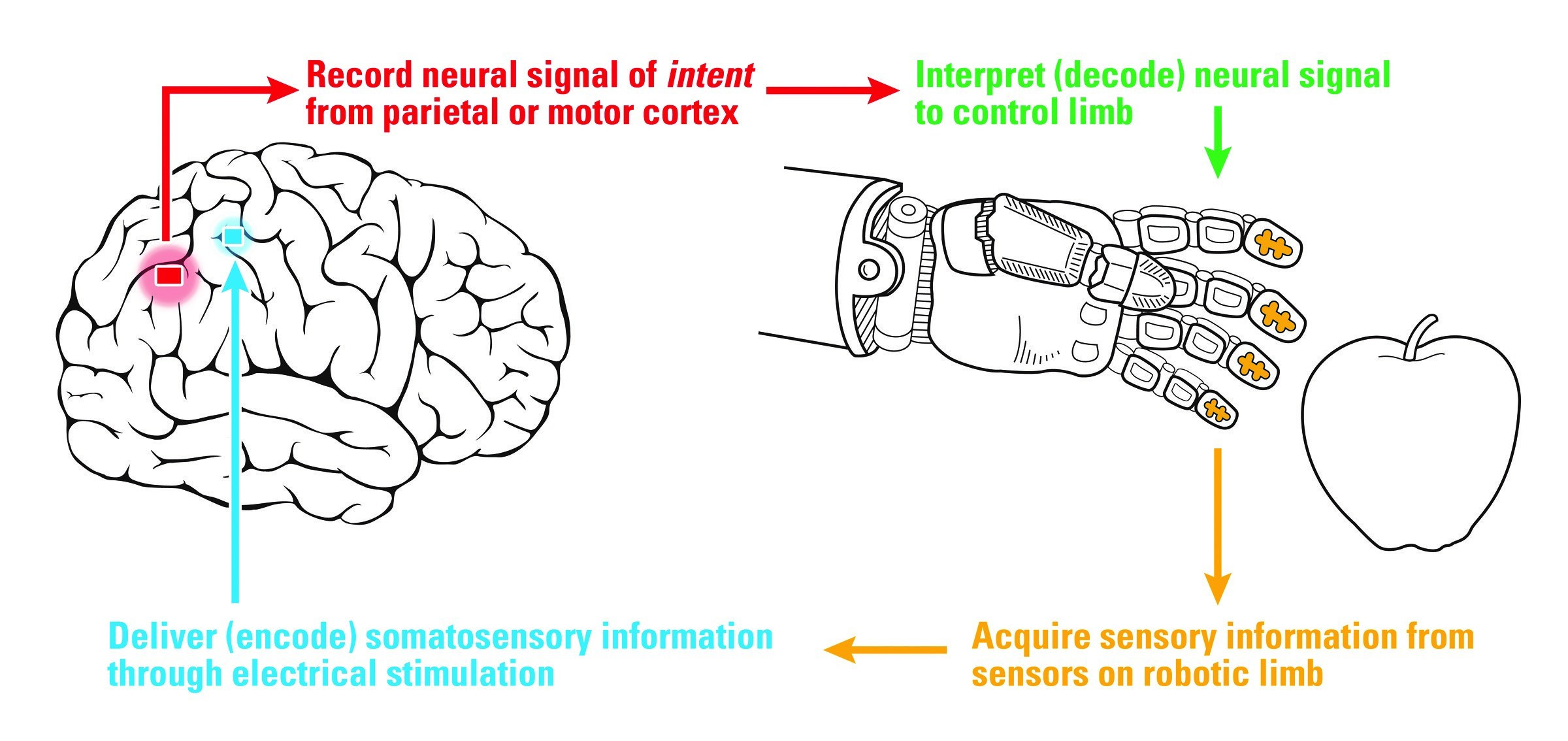The "brain-computer interface" may sound like a concept out of science fiction, but in recent years it has become central to one of medicine's great missions: restoring function for patients with paralysis and prosthetic limbs.
Most recently, a team led by an investigator at the Keck School of Medicine of USC, with scientists at both USC and the California Institute of Technology, has shown that it's possible to generate "artificial somatosensation"—the sense of touch—through the delivery of electrical stimulation to the brain.
Research on brain-computer connections in robotic prosthetics has focused mainly on improved methods of controlling the movements of the prosthetic limbs, explained lead author Brian Lee, MD, PhD, assistant professor of Clinical Neurological Surgery at the Keck School of Medicine of USC, and Associate Director of the USC Neurorestoration Center. Lee is also currently a scholar in the SC CTSI's KL2 researcher training program.
But more recently, Lee said, advances in technology have enabled researchers to add sensory feedback into the picture—a necessary element for accurate and natural limb movement.
"Movement is only part of the problem," said Lee. "The sense of touch provides important feedback for the use of limbs, including sensation of heat, vibration, pressure, and position in space. We can now send that sensory information back into the brain, either from the prosthetic arms or from the patient's own arm that is paralyzed or has lost sensation from an accident or other neurological damage."
The team conducted their study with the participation of epilepsy patients already undergoing surgery to treat their seizures, said Lee. During the surgeries, researchers placed small cortical stimulation grids on the region of the brain associated with hand and arm sensation and tested various electrical stimulation parameters. The participants, who were awake, reported the sensation they experienced. They also performed tasks using the sensory feedback created by the pulses, such as moving their hands over grids and searching for targets.
Lee and his colleagues recently published their findings in the journal Frontiers in Systems Neuroscience, “Engineering Artificial Somatosensation Through Cortical Stimulation in Humans.”

"The stimulus-evoked sensations were usually of artificial quality," the researchers wrote, "but in some cases were more natural and of a cutaneous or proprioceptive nature." Varying the stimulation produced different sensations.
The participants achieved nearly 100 percent accuracy in behavioral tests, and near-immediate responses to the stimulation, the researchers reported.
"The idea is that we can directly tap into brain signals and use those signals to control robotic arms or other devices," said Lee. "For people who have paralysis from stroke, we may be able to bypass the damaged neurological pathways and find another way to connect the arm and the brain."
Lee conducted the somatosensory research project with colleagues at USC and the California Institute of Technology in Pasadena, California.
Lee noted that the SC CTSI program's focus on team and collaborative science provided valuable background to manage the work of the many co-investigators and researchers who took part in the multi-institution study.
